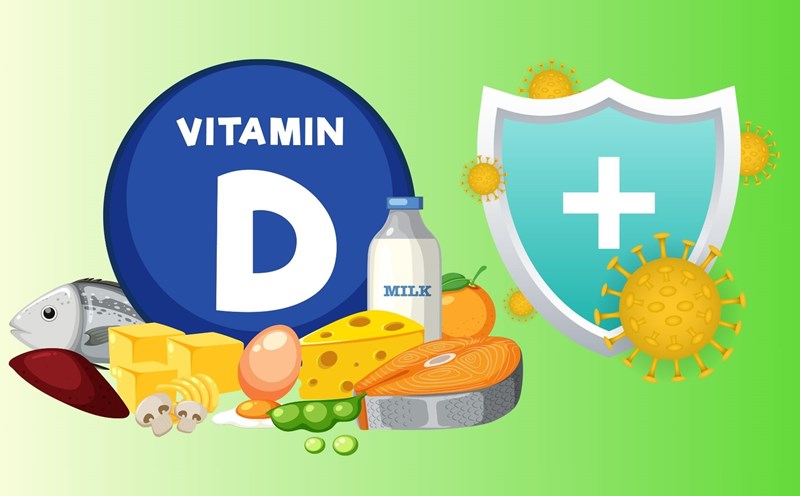How can vitamin D deficiency cause anemia?
According to nutritionist Shraddha Bhosale, Adhikari Lifeline General Hospital (India), vitamin D plays an important role in maintaining the iron levels needed to create hemoglobin - a protein in red blood cells that helps transport oxygen. When the body lacks vitamin D, inflammatory cytokines, such as interleukin-1 beta (IL-1β) and interleukin-6 (IL-6), increase. These cytokines stimulate the production of hepcidin, a hormone that reduces the ability to absorb iron from the intestines and retain iron in cells, causing iron deficiency and disrupting red blood cell formation.
The link between vitamin D and hepcidin
When vitamin D levels are low, hepcidin levels in the body increase. Hepcidin plays an important role in regulating iron and when its concentration is too high, the absorption of iron from the intestines is reduced, while iron is retained in cells, reducing the amount of iron available to produce new red blood cells. This leads to anemia.
Benefits of vitamin D supplementation
Nutritionist Shraddha Bhosale says vitamin D supplementation can help improve iron regulation in the body, reduce hepcidin levels and support iron metabolism. This can help reduce anemia, especially in people at risk of potential iron deficiency.
Recommended vitamin D intake and supply
The recommended daily intake of vitamin D for adults is 600 IU and for people over 60 years old, they should supplement about 800 IU per day. Sunlight is the main source of natural vitamin D. In addition, some foods such as fatty fish, egg yolks, mushrooms, milk, tofu and cereals are also good sources of vitamin D.
Symptoms of anemia
Common symptoms of anemia include fatigue, weakness, pale skin, shortness of breath, irregular heartbeat, dizziness, headaches and cold hands and feet. If you experience these symptoms, vitamin D supplementation and iron-rich foods can help improve your condition.











